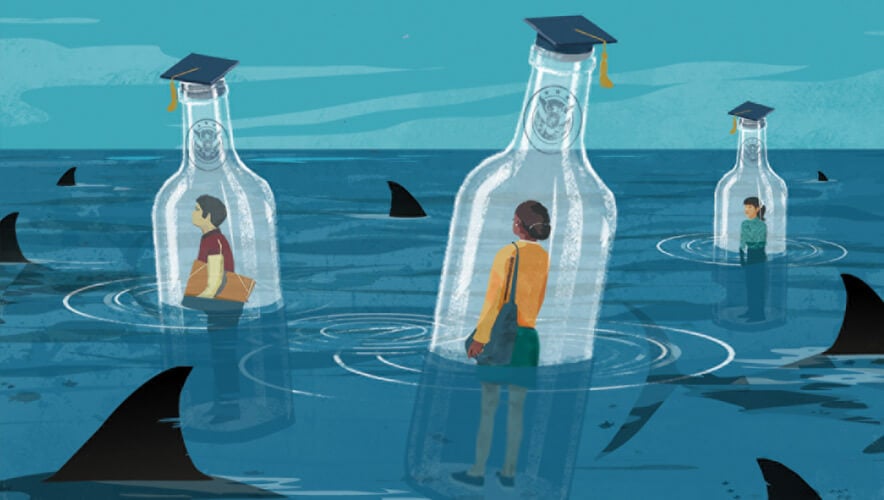Feds Take on Assault
As the number of reported campus assault incidents continues to increase, concerns over whether colleges are properly investigating those cases are also on the rise. And so, federal officials are stepping in—and stepping up their oversight efforts to look into some of these investigations.
The number of colleges and universities under Title IX investigations by the U.S. Department of Education’s (ED) Office for Civil Rights (OCR) has been steadily growing, from 55 colleges in May 2014 to 159 higher education institutions by the end of 2015. In these investigations, the OCR is examining allegations that the colleges mishandled sexual assault cases.
Given this increase in investigations, ED officials recently pressed for more funding from Congress, especially because, over the past 20 years, the department's full-time staffing has shrunk by roughly 33 percent, according to government statistics. In the Obama administration’s last budget proposal, the department requested a funding increase from $100 million to $131 million, which would allow for the hiring of at least 200 more staffers. Congress would not go that far, but it did grant ED a $7 million increase, from $100 million to $107 million.
“While the budget allocation is less than what President Obama requested, this money will help ensure OCR can continue to respond to discrimination complaints in an effective and timely manner through additional enforcement staff,” the department said in a statement.
The beefed-up federal resources are just the latest efforts to address a problem on many American campuses that continues to be grim, according to recent research. One out of five women is sexually assaulted while in college; the majority of these incidents occur during the student’s first two years, with the perpetrator being someone she knows. The majority of these assaults go unreported, according to the White House Task Force to Protect Students from Sexual Assault.
The alarming frequency of sexual assaults drove the Obama administration and a few U.S. senators to propose sexual assault prevention initiatives in 2014. Since sexual assault is still chronically underreported, the White House proposal called for officials to get a clearer picture of the problem through the use of surveying. As part of this effort, the Bureau of Justice Statistics (BJS) conducted a campus climate survey, which was released earlier this year.
The BJS study surveyed nine unnamed colleges and presented estimates on the prevalence of sexual assault, rape, and sexual battery incidents during the 2014–15 academic year, as well as characteristics of the victims and the incidents. The study also examined the relationship between campus climate and rates of sexual victimization.
The findings were sobering. The BJS study found that for undergraduate females, the average rate of sexual assault after entering college at the nine schools was 21 percent, with the rates varying from 12 percent to 38 percent. Among fourth-year female undergraduates, roughly 25 percent, or one in four, had been sexually assaulted since entering college.
And across the nine schools, only 13 percent of rape incidents and 4 percent of sexual battery incidents were reported to an official such as a school administrator, faculty or staff member, campus police, or local law enforcement, the study found.
Another recent study, this one led by Texas A&M University economics professor Jason Lindo under the auspices of the Bureau of Economic Research, approached the campus assault situation from a different angle—namely, the issue of when campus assaults are most likely to occur. Since alcohol typically goes hand in hand with aggression, Lindo and his colleagues looked at times when both alcohol and aggression flow freely on campus.
For their study College Party Culture and Sexual Assault, Lindo and his colleagues examined 22 years of FBI data. The researchers compared incidents of rape reported on football game days at Division I schools to law enforcement agencies that served students at Division 1 schools on game days versus reports on nongame days. The researchers controlled for other factors, such as differences expected across different times of the year.
On home game Saturdays, reports of rape from college women aged 17 to 24 came in at a 41 percent higher rate than on nongame Saturdays, the study found. The increase was much lower (15 percent) during away game Saturdays versus nongame Saturdays.
The biggest spike, however, came on game days on which a home underdog team upset a higher-ranked opponent on campus. Reported rapes surged a whopping 57 percent on average in those circumstances, the study found.
“We recognize that college football games are but one component of a college culture that contributes to excessive partying,” the authors write. “Therefore, these results can be viewed as highlighting the potentially large effects on rape that can result from various policies and activities that alter the social context.”
